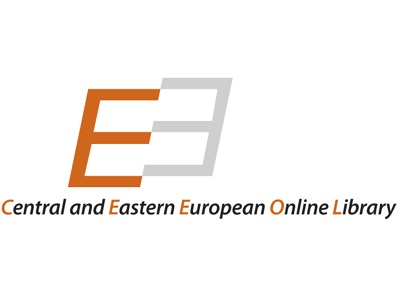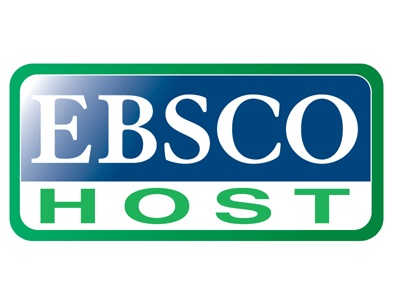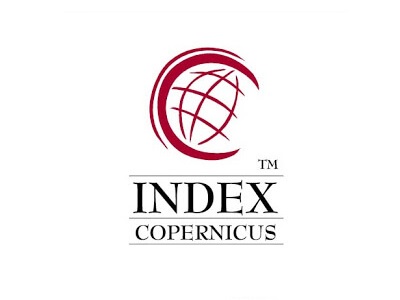
The paradigm of network society emphasizes a distinct pattern comparing to the previous information society, as a "result of ongoing innovations embedding social networks". The question of how technological improvements (intelligent design, the use of intelligent devices, and a larger distribution of knowledge among diverse layers and dimensions of social networks) have transformed mental softs, cultural practices, and socio-economic and political organizations, through the development of the network form,- networked individuals, communities, stakeholders, cities, regions, states, "interconnected life"- gives different responses depending on the positioning of the researcher inside/outside a specific field of studies, or knowledge network, and on the attitude adopted towards technology as a "civilization shifter". The conceptualization of the „smart city project” extends dilemmas and controversy and requires new understandings of how critical-reflexive and programmed regimes of knowledge, intermingle the knowledge creation and the distribution inside/outside the city. The current paper draws a line of flight between human, institutional and technological dimensions of the smart city.
- Type: Case Study
- Published on: 12th October, 2017
- Keywords: Smart city, Multilevel intelligence, Actor-network theory, Socio-cybernetics, Cognitive metaphor
- Received: 9th August, 2017
- Final revision and acceptance: 8th October, 2017

This paper discusses the daily wages of employees in the public and private sectors in Palestine. Based on the Palestinian Central Bureau of Statistics (PCBS) labour force survey, the author used a paired samples t-test to examine the difference in wages among the public sector, private sector, and Israel and the settlements between 2000 and 2015. The results show that the maximum wages are among the workers who work in Israel and the settlements. The wages in the public sector have become slightly higher than the wages in the private sector since 2005. The daily wages of wage employees in Israel and the settlements are significantly different from the public and private sectors. The employees’ daily wages in public and private sectors are strongly correlated, but there is no significant difference between the two sectors in the West Bank. Regarding Gaza strip, the correlation is moderate and there is a significant difference between the two sectors.
- Type: Case Study
- Published on: 12th October, 2017
- Keywords: Wages, Public sector, Private sector, Palestine, West Bank, Gaza Strip
- Received: 15th July, 2017
- Final revision and acceptance: 8th October, 2017

The smooth operation of stocking and the warehouse play a very important role in all manufacturing companies; therefore ongoing monitoring and application of new techniques is essential to increase efficiency. The aim of our research is twofold: the utilization of the pallet shuttle racking system, and the introduction of a development opportunity by the merging of storage and order picking operations in the pallet shuttle system. It can be concluded that it is beneficial for the company to purchase two mobile cars in order to increase the utilization of the pallet shuttle racking system from 60% to 72% and that of the storage from 74% to 76%. We established that after the merging of the storage and order picking activities within the pallet shuttle system, the forklift driver can also complete the selection activities immediately after storage. By merging the two operations and saving time the number of forklift drivers can be reduced from 4 to 3 per shift.
- Type: Case Study
- Published on: 12th October, 2017
- Keywords: Warehouse management, Pallet shuttle system, Order picking system
- Received: 25th August, 2017
- Final revision and acceptance: 8th October, 2017

The underground economy issue has raised in time miscellaneous discussions, it representing a large interest problem that affects the nations all over the world, without exception and, thereby, the well—being of stand—alone individuals. Although also treated in some previous works of the author, this topic in herein approached from a different perspective, namely the one related to distinct methods to be used in order to capture, by quantification, this undesirable economic form. Such methods, empirically tested or just imposed, based on arguments, by the researchers having launched the same, are rendered while considering their pluses and minuses in revealing, with a reasonable accuracy, the level of the above—mentioned informal economy.
- Type: Case Study
- Published on: 17th November, 2017
- Keywords: Underground economy, Informal labour market, Officially unreported incomes, Informal economy quantification, Quantitative methods
- Received: 25th August, 2017
- Final revision and acceptance: 14th November, 2017

Purchase and consumption behavioral patterns of various family formations in different social and cultural contexts have been subject to intensive investigation over the recent years. Residential real estate as a product category represents one of the most complex household purchases incorporating a wide diversity of attributes to be considered in order to match family members’ needs within available resources. The purpose of this paper is to add some insights into spousal perceptions of gender role specialization throughout a residential real estate purchase family decision-making process. The distribution of influence between husbands and wives across three decision-making stages, three sub-decisions and twelve housing attribute choices and the relative importance of twelve residential real estate characteristics are examined using a convenience sample of both spouses in 127 Bulgarian heterosexual married and cohabiting couples.
- Type: Case Study
- Published on: 17th November, 2017
- Keywords: Gender Roles, Relative Influence, Family Purchase Decision-making, Residential Real Estate
- Received: 25th August, 2017
- Final revision and acceptance: 14th November, 2017

As part of the top management actions, business diplomacy involves keeping the relations of the multinational corporations with foreign government representatives, NGOs, coalitions and other entities that are not companies, with the purpose of building business relations in an international environment. The research aims for better describing the actions and consequences on a decisional level for the managers that act as business diplomats within the companies they represent. Since it is not clear how the multinational corporations conduct business diplomacy, a term often confused or mixed with corporate diplomacy, the article will use an extensive business literature review, in order to define any similarities and differences in practice, specific for the international business environment. The results will show that the international relations among the two environments studied, corporate and other representatives, show a strong dependence on the company mission and organizational behavior, as well as the national and international law, but also of the manager’s background and international experience.
- Type: Case Study
- Published on: 17th November, 2017
- Keywords: Management profile, Business diplomacy
- Received: 25th August, 2017
- Final revision and acceptance: 14th November, 2017

The purpose of this article is to define software personalization and software product. As on the market there are several types of software they all have in common the fact that they need personalization, whether that is possible or not in some cases. The idea is to have a solid backbone/core that can support building on top of it tailored functionalities. That backbone can also be a prototype and then the question that emerges is related to the characteristics that a prototype should have in order to turn into a software product that can be personalized. Authors have researched this aspect and present the results of their study in this article, this being actually the novelty that this article brings up.
- Type: Case Study
- Published on: 17th November, 2017
- Keywords: Software productization, Software personalization, Prototyping
- Received: 25th August, 2017
- Final revision and acceptance: 14th November, 2017

The paper presents trends in economic growth and development in twelve least developed countries from 2006 to 2015. The study is based on the data retrieved from the World Bank Database. During the analysed 10 years, seven Asian (Myanmar, Lao PDR, Bhutan, Cambodia, Timor-Leste, Bangladesh, and Afghanistan) and five African (Ethiopia, Rwanda, Angola, Sudan, and Mozambique) LDCs had average annual GDP per capita growth rates higher than 4.0%. GDP has been largely generated through the services and industry sectors. A few LDCs sustained strong growth mainly because of foreign assistance and in other countries remittances were a significant source of development finance. Resource rich countries recorded high inflows of foreign direct investment. In a few fast growing LDCs the state has been heavily engaged in economy. The analysed LDCs substantially improved their development indicators.
- Type: Case Study
- Published on: 30th November, 2017
- Keywords: Economic development, Economic growth, LDCs
- Received: 13th November, 2017
- Final revision and acceptance: 25th November, 2017

This paper examines Romanian companies’ behaviour (listed on the Bucharest Stock Exchange) to a change of dividend tax rate. Even if the number of companies which had paid dividends in 2016, for 2015 decreased to 32, compared with 34 companies from previous year, the total value of paid dividends increased with 53% comparatively with dividends paid for 2014. This can be explained through the new tax rate which has been reduced from 16% to 5%. We found that the shareholders obtain profit from two sources: due to increase of gross dividend and due to decrease of the tax rate. Moreover, the paper found also: for the companies who paid higher dividend for 2015 compared with 2014 the dividend paid for 2015 is statistically significant different than the dividend paid for 2014; for the companies who paid smallest dividend for 2015, we were not able to find any statistical difference. This means that the companies which increased the dividend for 2015, took into consideration the new legislation and they are motivated to pay more to the shareholders; companies which decreased the dividend value for 2015 is due to some internal factors.
- Type: Case Study
- Published on: 30th June 2017
- Keywords: Fiscal policy, Taxation, Financial crisis, Dividend pay-out
- Received: 17th January, 2017
- Final revision and acceptance: 24th June, 2017

Apparently, the international competition seems to be moved to the area of investments in new technologies waiting for results in the near future. Nanotechnology is by far the most wanted by investors. The last twenty years the investments in nanotechnology became the priority for all the developed states and this trend was followed by the less developed countries. At the opposite side, there are countries as Romania that seem to lose the start in front of those very active in this field. This paper tries to present the role of the Romanian Research and Development activity to reshape the textile industry through new technologies and nanotechnologies especially. To gather the proper information, the in-depth interview method was used. The conclusions reveal that state keeps the key for a good research activity by offering stable and consistent support. At the same time, a lot of measures or recommendations could be a pragmatic solution to take seriously the role of the research activity to bring its contribution for this big challenge.
- Type: Case Study
- Published on: 30th June 2017
- Keywords: Technology, Nanotechnology, Research, Textiles, Romania
- Received: 24th April, 2017
- Final revision and acceptance: 24th June, 2017

This paper is intended to clarify the phenomenon that lower achieving students tend to evaluate their own academic performance less accurately than those who do better in their studies. Previous studies have found that lower performers generally overestimate while higher performers underestimate their performance. The current study analyses self-assessment behaviour and efficiency among Hungarian higher vocational education students. We found that the lowest level of higher education students typically overestimate their performance. Our results strengthen the empirical evidences from previous studies that showed that higher-achieving students evaluate their performance more accurately than their lower achieving fellows. Furthermore we found that higher-achieving students tend to over-assess their examination results to a lesser degree than low-achieving students. We also analysed the difference between the two genders. Compared to female students, males tend to overestimate their own performance.
- Type: Case Study
- Published on: 30th June 2017
- Keywords: Self-assessment, Self-evaluation, Business education, Higher education, Students’ academic performance
- Received: 25th April, 2017
- Final revision and acceptance: 24th June, 2017

The development of a loyalty model involves the construction of a proper research instrument. For the loyalty model of the clients for financial services, the pre-testing of the research questionnaire represents a significant stage. This article presents the methodology used in this stage for testing the reliability of a loyalty scale. Firstly, this implies choosing the appropriate scales for each variable included in the suggested research model. Secondly, the internal consistency for each of these scales is measured as an indicator of their reliability. The reliability analysis described represents an essential stage in building a measurement instrument for a loyalty model.
- Type: Original Research
- Published on: 30th June 2017
- Keywords: Loyalty, Measurement scale, Reliability
- Received: 8th March, 2017
- Final revision and acceptance: 24th June, 2017

The modern economic system of any nation is divided into three major producer’s sectors called primary, secondary, and tertiary. These sectors reform a chain of production as a continuum, ultimately in the end provide goods and services. In UAE, economy share divided by each sector of the current GDP in year 2015 were 1%, 48%, and 51%, for the primary, secondary, and tertiary sectors, respectively. The purpose of this empirical study is to analyze the economic industries of the secondary sector by projecting the contribution growth share of factors of production through using the growth accounting model for time series from 1990-2015. The methodology employed a quantitative description and data sourced from FCSA. We find the manufacturing industry the main key contributor to sector growth share, followed by the construction industry, where the mining and quarrying subsectors have less impact compared to the rest. We observed that the TFP performance improved positively in line with a declining size of labor.
- Type: Case Study
- Published on: 30th June 2017
- Keywords: Growth accounting, Secondary sector, Economic industries, TFP, UAE
- Received: 14th April, 2017
- Final revision and acceptance: 24th June, 2017

Qatar’s healthcare system is comparatively new and has experienced noteworthy developments over its brief history. In this paper, our aim is to look at the unique challenges this small nation has faced in building that system. This paper will describe the accomplishments of Qatar’s medical authorities and the challenges they faced. It will also compare public and private healthcare providers. Today, the government of Qatar has financed all the health care for this rapidly-developing, multicultural nation, but it is now planning to introduce medical insurance. This report of its experience will benefit other nations wanting to develop their own healthcare systems.
- Type: Review Article
- Published on: 30th June 2017
- Keywords: Economic, Qatar healthcare system, HMC, Organization, Public & private healthcare
- Received: 10th April, 2017
- Final revision and acceptance: 24th June, 2017

Talent and career management has become a function of central significance not only in international but in Hungarian HR practice as well, since the employment and keeping of excellent colleagues might constitute a strategic competitive advantage for organizations. In order for an organization to be able to manage its workforce – not only to find talents but also to be able to keep, motivate and train them – deliberate identification and management are necessary. In terms of its objective, the talent management system is identical with career management; its primary focus is to improve organizational efficiency through the satisfaction of employee demands and to offer an attractive organizational life cycle to the program participants. Due to the above, application and interpretation of the two systems are often mixed on organizational level. In the scope of the study, organizational interpretation of talent is defined, differences/similarities between talent and career management systems are introduced and the possible operation within an integrated system is proposed.
- Type: Review Article
- Published on: 30th July 2017
- Keywords: Human resource management, System integration, Talented workforce
- Received: 15th July, 2017
- Final revision and acceptance: 24th July, 2017

Gross Domestic Product is the most representative synthetic indicator that expresses the evolution of the national economy. This macroeconomic indicator is used in the analysis of the level of the national economy, as well as the dynamic evolution of the national economy. In the forecast studies we rely on GDP evolution. In these situations, we might identify the factors of economic growth, and their influence. On the evolution of GDP have influence some factors: employees, labour productivity, the level of technology, investments and foreign direct investment, imports, exports or net exports, total consumption, and so on. We can analyze the data series and graphical representation. Detailed analysis is performed using econometric methods, parameters which express interdependence, meaning and intensity of correlation. Thus, we estimate the economic developments. The authors studied and proposed some econometric models for the analysis of economic growth/forecast. The novelty is that we adapt some econometric models to macroeconomic analysis.
- Type: Case Study
- Published on: 30th July 2017
- Keywords: Econometric model, Economic growth, Correlation, Factor of influence, Parameter
- Received: 9th May, 2017
- Final revision and acceptance: 24th July, 2017











